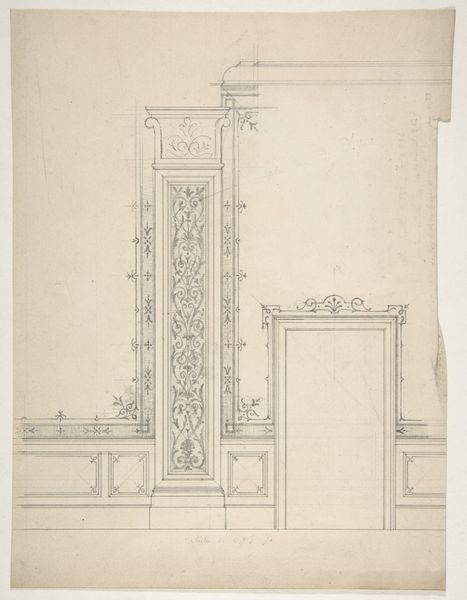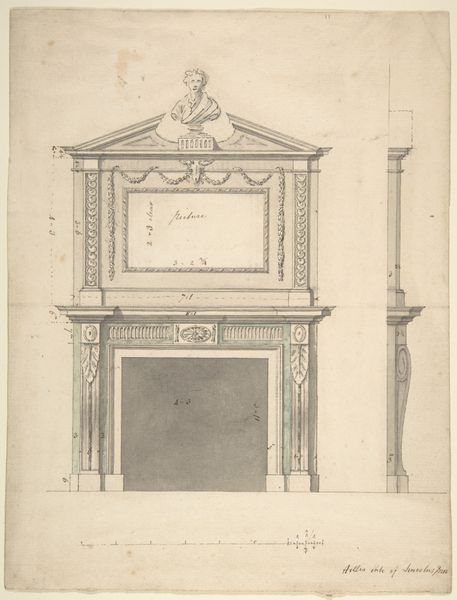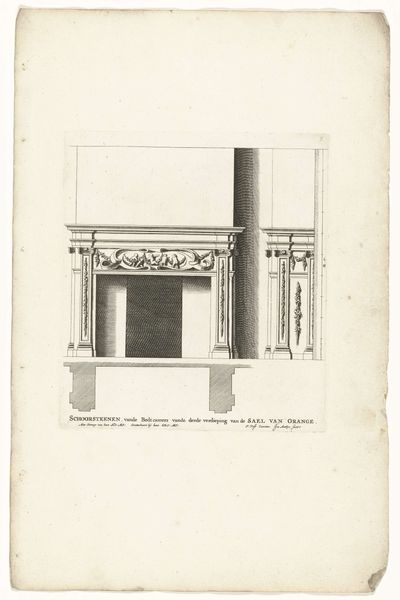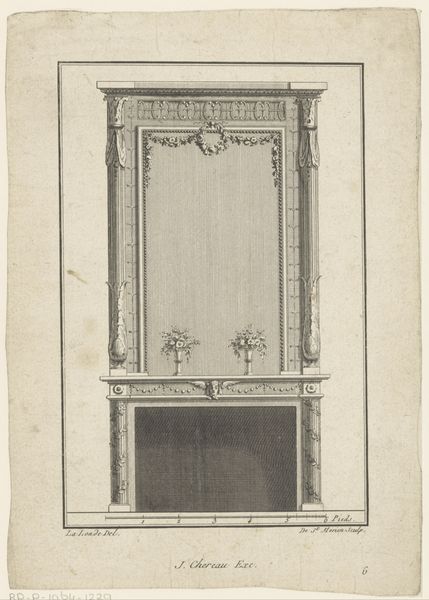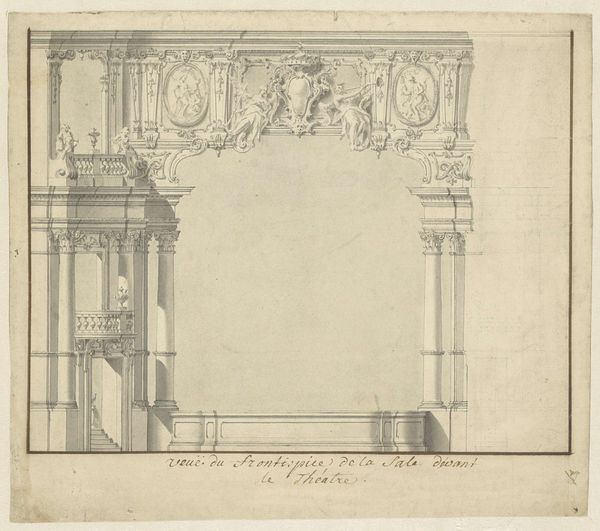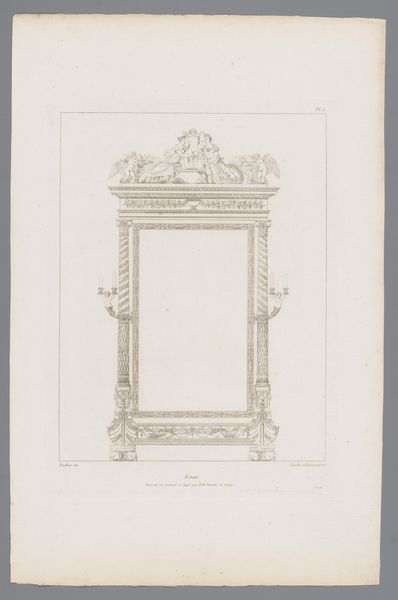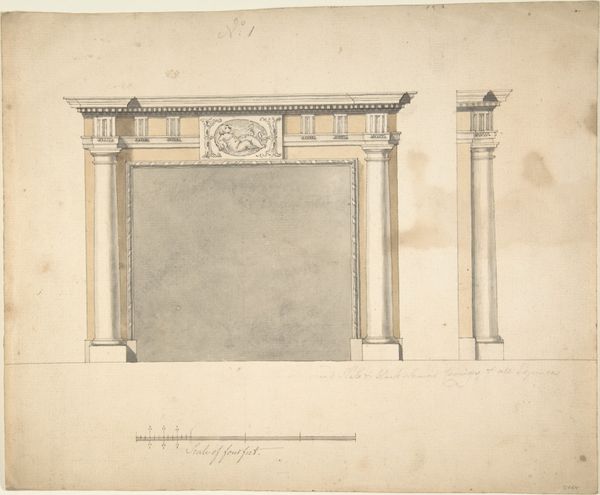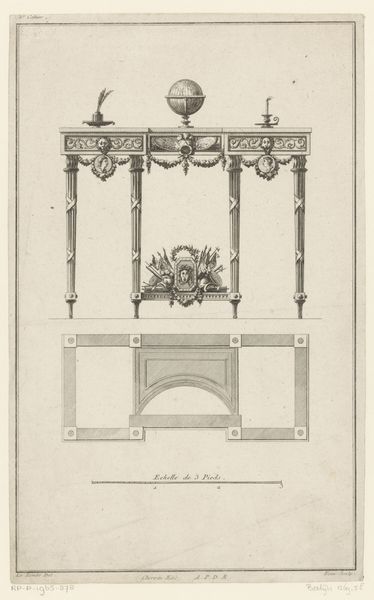
Design for a Chimneypiece in the Eating-room, Danson Park, Kent 1768 - 1778
0:00
0:00
drawing, print, paper, pencil, architecture
#
drawing
#
neoclacissism
# print
#
classical-realism
#
paper
#
pencil
#
cityscape
#
architecture
Dimensions: sheet: 11 15/16 x 8 in. (30.3 x 20.3 cm)
Copyright: Public Domain
Curator: This meticulously rendered drawing is a design for a chimneypiece in the eating room of Danson Park, Kent, dating back to between 1768 and 1778. It is attributed to Sir William Chambers. Editor: My first impression is one of austerity. The stark lines and minimal shading create a somewhat cold, yet elegant aesthetic. It appears incomplete; it looks as if more details, material, and process would likely add warmth and perhaps a tactile element that's now missing. Curator: Indeed, the aesthetic leans heavily into Neoclassicism. Note the careful symmetry and the classical motifs. The lyre on the left column, the urn atop the mantelpiece, the cameo… all speaking to an ordered and refined sensibility. Editor: The choice of pencil and paper is interesting too. There's a directness here. It suggests a relative lack of concern for posterity compared to stone carving in-situ for instance, which can give great insight into the intended crafting and social milieu of Danson Park. This also allows a greater speed to the production process, and in some cases the ability for more craftsmen and a higher overall productivity output of chimney pieces during this time. Curator: Quite. Chambers has cleverly used shading to create a sense of depth and volume, almost as if trying to escape the two-dimensional plane. Semiotics give the columns supporting the mantelshelf clear indications of stability and balance through visual association. Editor: I wonder about the craftspeople involved in executing the design. A drawing such as this one would require the participation of other skilled artisans to be built. There is labour present even in absence here through this division, one step of design away from other practical tasks. How much freedom were the craftsmen permitted in translating this sketch into reality? Curator: That is, unfortunately, difficult to discern. What remains certain is the clarity of Chambers’ vision as exemplified in this sketch; each line and detail contributing to a harmonious whole. Editor: Looking at it, it feels rather detached from the function of a fireplace—of a fire and heat. I’m curious if these cold classic forms served to reinforce social structures within the dining room itself at the time of creation. Curator: It offers a fascinating look into the ideals of 18th-century design. Editor: Agreed, while also reminding us that art is not created in a vacuum. This drawing encapsulates so many considerations about its creation.
Comments
No comments
Be the first to comment and join the conversation on the ultimate creative platform.
